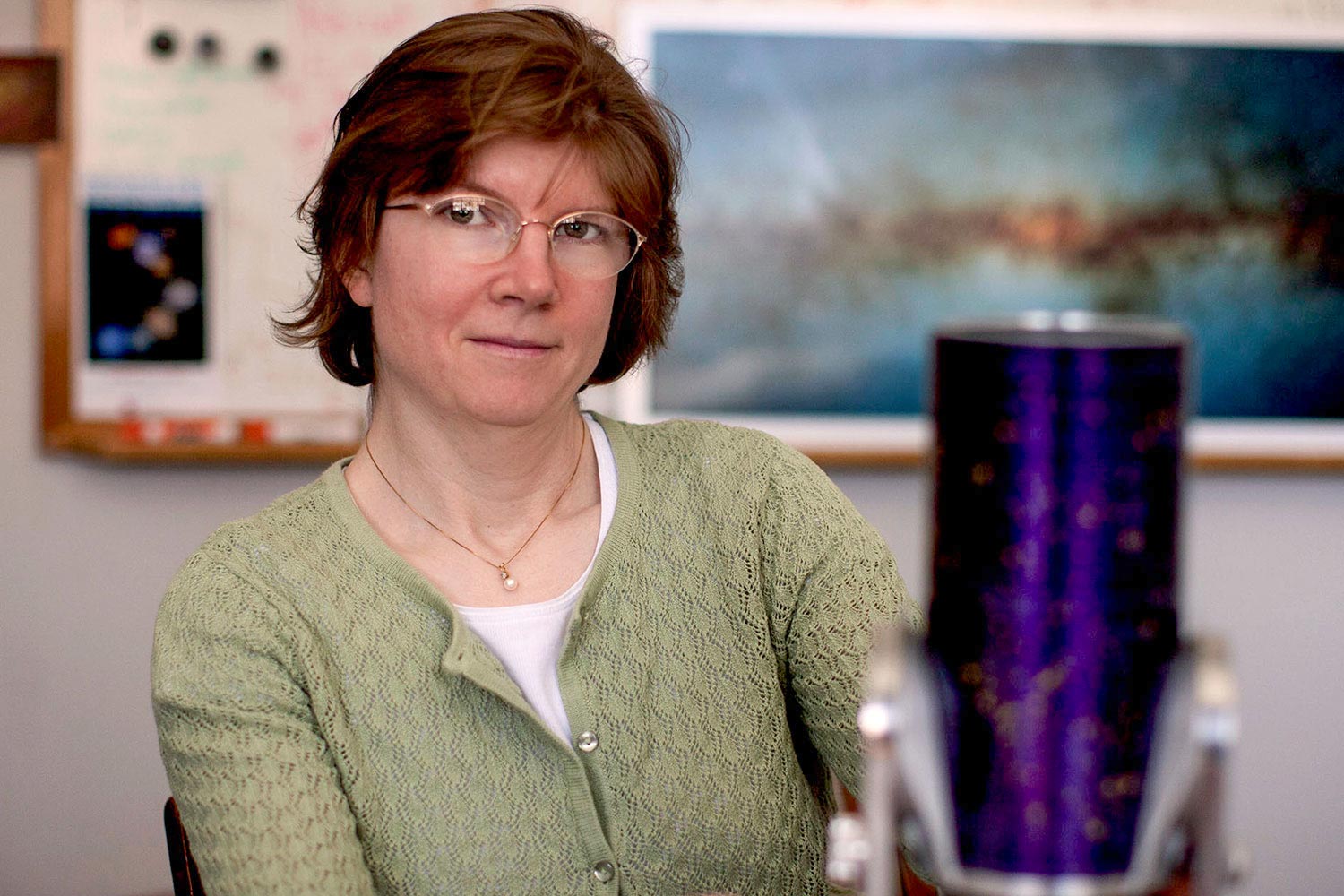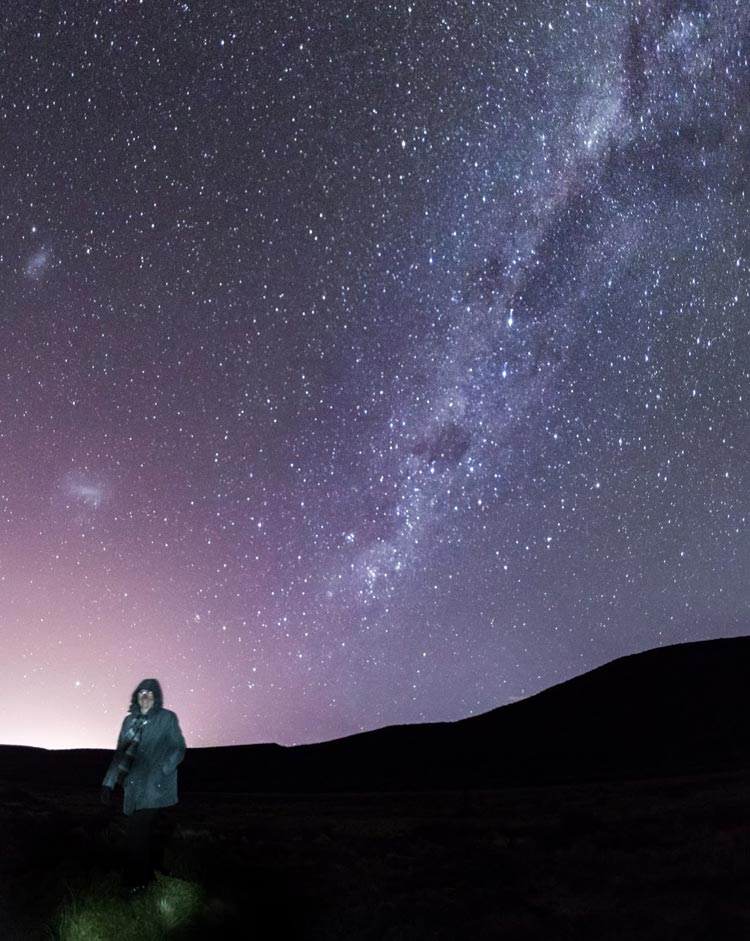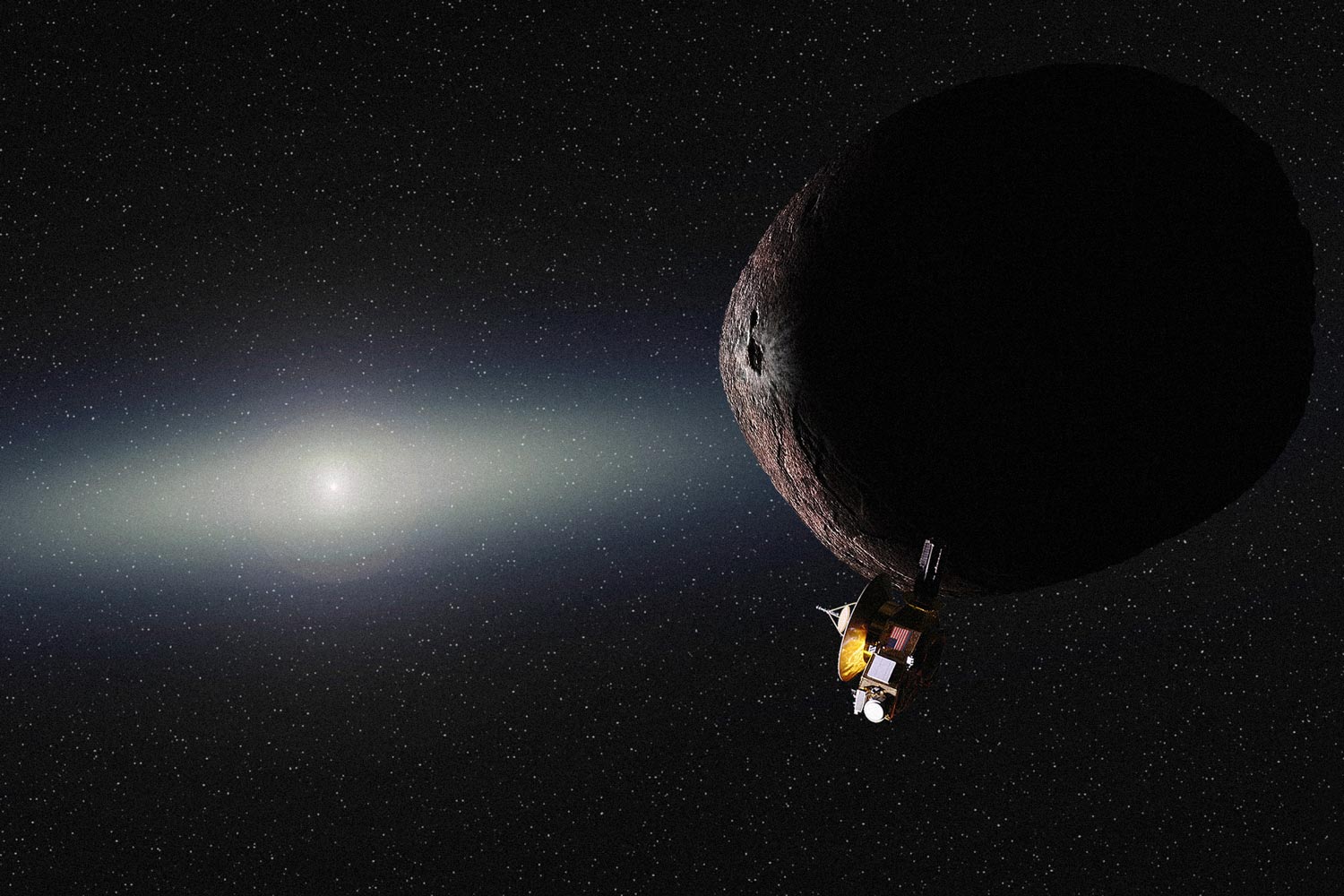As the New Horizons spacecraft – which made a dramatic flyby of Pluto and its moons two years ago – streams on into deeper space, scientists are carefully choosing targets to observe along its path through the “Third Zone” of the solar system – known as the Kuiper Belt – beyond the orbit of Neptune. They are seeking additional insights to how the solar system formed and evolved.
NASA selected University of Virginia astronomer Anne Verbiscer as an assistant project scientist to help pick which chunks of rock and ice, among millions, to observe as the spacecraft rushes along at 30,800 mph on its 3-billion-mile journey into deep space.
A planetary scientist, Verbiscer has been involved with the New Horizons project for three years. She was part of the team that identified its next flyby target, and is playing a key role in determining New Horizons’ flight path through the Kuiper Belt. Verbiscer also continues to work with other astronomers on interpreting data and images gleaned from the 2015 Pluto flyby.

Planetary scientist Anne Verbiscer is a NASA project scientist for New Horizon’s extended mission. (Photo by Dan Addison, University Communications)
Through an exhaustive survey conducted in 2014 by the Hubble Space Telescope, Verbiscer and her team first narrowed the candidates of possible Kuiper Belt flyby targets to two finalists, before selecting the one that will be scrutinized by New Horizons’ cameras and sensors when it flies within 2,200 miles of the object’s surface on Jan. 1, 2019.
“We found a target along the trajectory of the spacecraft that is likely to reveal interesting and important new information about the composition of the outer solar system,” Verbiscer said from the Southwest Research Institute in Boulder, Colorado where she is working closely this year with other project managers.
The chosen object is dubbed Kuiper Belt Object 2014 MU69, and New Horizons will fly by, take images and gather data on the approach, during the pass and then through the rearview mirror (so to speak), as the object quickly recedes from view.
Currently, all that is known about Kuiper Belt objects similar to MU69 is that they are “small, dark and red,” Verbiscer said. MU69 is only about the size of one of Pluto’s smallest moons, but a close pass of its surface terrain will reveal much about the makings of the Kuiper Belt generally – how planets and other objects may have formed billions of years ago, creating an enormous band of material, circling the sun at the outer limits of its gravitational reach.

Verbiscer last summer spent several cold and windy nights in South Africa and Argentina seeking a Kuiper Belt object to be studied in detail during a 2019 New Horizons flyby. (Photo by Alistair Daynes, ReWildTV, GHSPi "Pluto & Beyond")
The Kuiper Belt is a vast region of icy and rocky objects orbiting the sun millions of miles beyond Pluto. The belt’s biggest objects, which may be planet fragments or giant chunks of ice embedded with pieces of planets that collided during the formation of the solar system, are so small they are nearly invisible to even the most powerful telescopes, including Hubble, which offers the best view – at least until New Horizons starts sending back thousands of images and other data that will reveal more in a moment about the region than astronomers have learned and surmised in decades of trying to observe the nearly unobservable.
To help characterize the flyby target, Verbiscer last June led and worked with international teams of astronomers in South Africa and Argentina, seeking evidence of the size and precise location of MU69 – important information to help NASA tweak, ever so slightly, the trajectory of New Horizons, to allow a reasonably close pass without expending too much of its limited propulsion fuel and to optimize the observations for the size and brightness of MU69.
“We used multiple portable telescopes located in remote regions on Earth to observe MU69 as it blocked out the light from a distant star, an event known as an occultation,” Verbiscer said. “A lot of planning went into these occultation expeditions, and we succeeded in watching the star wink out for a quick moment, an eclipse essentially, which proved to us that MU69 is where we expected it to be at exactly the time we predicted.”
The missions on the southern ends of two continents included UVA astronomers Mike Skrutskie, John Wilson, Matt Nelson and several students, including undergraduates. By proving the location and size of MU69, the ground-based astronomers provided highly valuable data to NASA for achieving the upcoming flyby.
Once the flyby occurs, data will stream back over months for Verbiscer and her colleagues to examine, analyze and ultimately win a new understanding of the farthest reaches of our solar system.
“The New Horizons mission is exploration in its purest form,” Verbiscer said. “We are venturing into a relic region that has essentially been untouched since the formation of the solar system some 4.6 billion years ago. Everything we see from within the Kuiper Belt will be a new discovery.”
Media Contact
Article Information
October 18, 2017
/content/uva-astronomer-selected-guide-new-horizons-spacecraft-new-tiny-world

